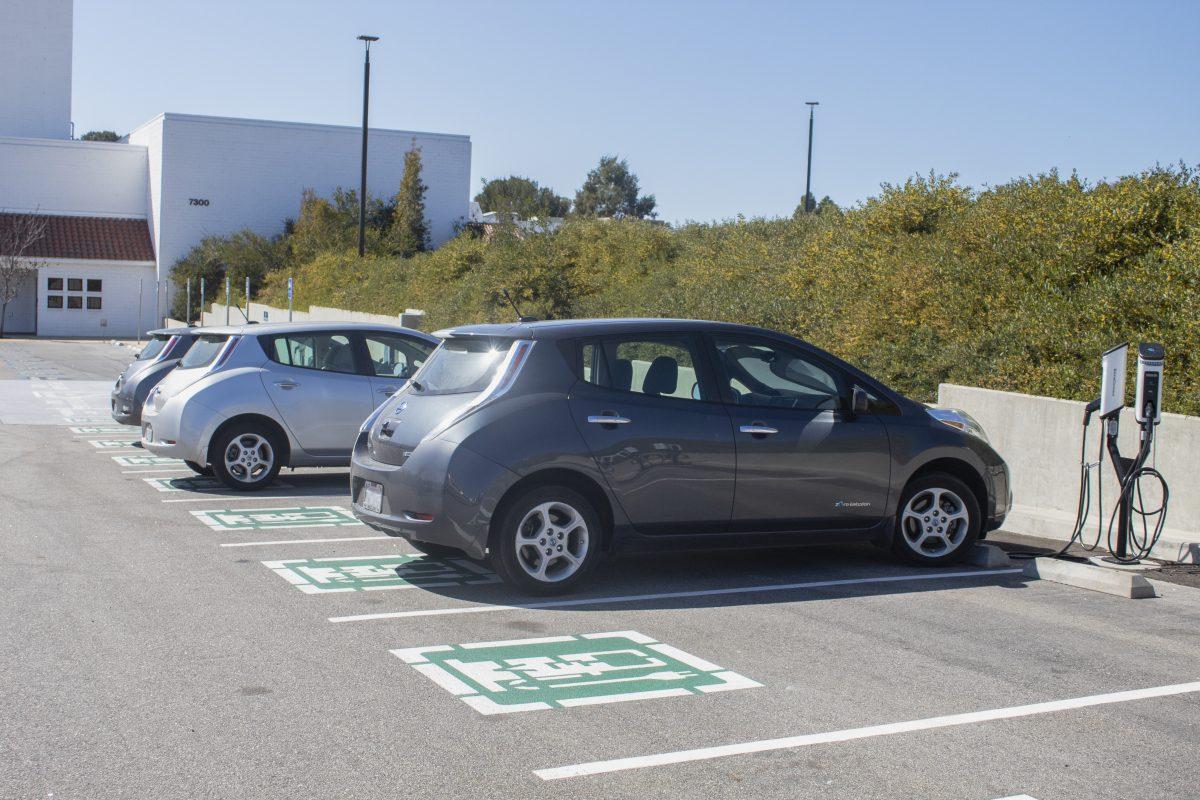Cuesta College has installed electric vehicle (EV) charging stations across the San Luis Obispo and North County campuses.Â
The San Luis Obispo campus has a total of 24 stations in Lot 2A, and the North County campus has 16 in Lot 11. Â
The increased parking rates this semester are not linked to the development of the new charging stations, according to Dan Troy, Vice President of Administrative Services at Cuesta College.
“The reason that we increased the parking fees is that it had been about eight years since they had been increased and the cost of monitoring and maintaining the parking lots has gone up over time,†Troy said.Â
The wear and tear on the parking lots over the years, along with the compensation of the employees who monitor the lots, have become more expensive. There is a two-year plan to raise the cost of parking permits.Â
“It went up to $5 this year and will increase five more dollars next year,†Troy said.Â
Cuesta Promise grant recipients will not be susceptible to these changes; their parking fee will stay at $30 for the academic year. While the EV parking spaces are now exclusively available to individuals who are charging their cars, the district believes this does not take away from general parking. Troy acknowledged that this does make parking more competitive and did not affirm that this is an issue.Â
“There is plenty of parking on campus to meet the needs of our commuters, so it is not an issue that there is a lack of spots,†Troy said.Â
Cuesta College did not solely pay for the stations, and received several grants. The charging stations were largely subsidized by Pacific Gas and Electric Company (PG&E) and the Air Pollution Control District (APCD).Â
“They [PG&E] do a lot of the labor for us, and that [the grant] reduced the cost for the district that would’ve taken us to construct and install the chargers,†Troy said.Â
The San Luis Obispo County Community College District (SLOCCCD) also received another grant from the APCD of $135,000 that enabled them to defray the costs.Â
“So the good news for us is that we were able to install about 40 chargers and I do not think it will cost us more than about $125,000, which is actually very affordable,†Troy said. “Any electric car driving along highway one that wants to stop by and charge can do that with a parking permit, you do not have to be affiliated with Cuesta.â€
In order to use the EV stations, you need to have an account with a company called SEMAConnect. It requires a smartphone app, calling a number, or using a special card that works by tapping it on the EV station. Using the stations requires paying an hourly fee, which helps pay back the college for the use of utilities. For the first four hours, it will cost the user $1.50 per hour and then $2.50 per hour for every additional hour. The spaces are only to be used when actively charging your vehicle.Â

“The stations have visible indicators if they are actively charging or not, so it’s not just about being plugged in,†said Bryan Millard, chief of the Cuesta College Police Department. “We are creating signs for these spaces that will let people know that information. The EV stations will also notify the user when their charge is done.â€Â
There isn’t a definitive date for penalizing users who aren’t charging their vehicles until the signs are posted.
The campus has more plans of becoming environmentally conscious. According to Troy, Cuesta College will be installing additional water refill stations in every building. There are currently 12 filtered water stations scattered around campus, with an additional station being installed on the pool deck.Â
The school is currently looking into solar battery storage. Those batteries use the power from the sun and store some of that energy when the SLOCCCD faces peak energy costs. According to Troy, the solar batteries would allow Cuesta College to save on some energy costs because of peak usage rate savings.
“You’ll see in the future we’re just beginning with charging stations,†Troy said. “As we redo and recreate new parking lots forward, we’ll meet the chancellor’s office goal of having 10% of the spots filled by charging stations.â€








